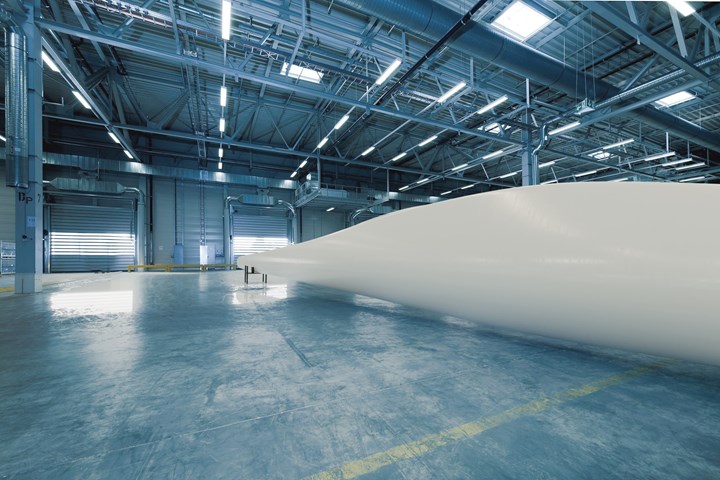HexPly XF surface materials satisfy high-quality wind blade surface finish
Suitable for prepreg and infusion processes, Hexcel’s HexPly XF reduce shell manufacturing time by up to 2 hours and removes all surface defects prior to painting.

Photo Credit: Hexcel
Hexcel’s (Stamford, Conn., U.S.) HexPly XF surface technology is said to significantly reduce shell manufacturing time within the wind blade surface finishing process. Overall blade manufacturing efficiency is increased by reducing time in the mold by up to two hours and by banishing surface defects that require rework before painting.
According to the company, HexPly XF is formulated to address the limitations of current blade shell surfacing techniques in the wind industry, where pinholes and other surface defects have to be repaired by hand to achieve the smooth surface required for painting.
To satisfy the most challenging surface quality, HexPly XF introduces a new material format as the surface finishing layer, eliminating the need for a traditional in-mold gel coating process. HexPly XF for infused rotor blades, is a lightweight, nonwoven semipreg construction, comprising an epoxy resin matrix that co-cures with standard epoxy infusion systems.
Easy to handle and supplied in a ready-to-use roll form, HexPly XF can be quickly applied by hand or with semi-automated layup equipment. It features one self-adhesive, surface finishing side, which is indicated by a removable protective foil. This side of the prepreg is placed against a release agent-treated mold surface. Once the material has been positioned, layup of the blade shell structure can begin, and the laminate can be infused. After curing, the blade is demolded.
HexPly XF material is said to be less than half the weight of a typical gel coat per square meter, reducing the overall weight of the blade. Additionally, the consistent areal weight and thickness of the prepreg film provide a completely uniform surface coating, ensuring blade weight distribution and balance are maintained. With no need to handle or mix liquid chemicals as in the gel coat process, HexPly XF also improves the health and safety working conditions on the shop floor.
The material has a shelf life of six weeks at ambient temperature, minimizing cold storage requirements and reducing scrap.
Related Content
-
Carbon fiber, bionic design achieve peak performance in race-ready production vehicle
Porsche worked with Action Composites to design and manufacture an innovative carbon fiber safety cage option to lightweight one of its series race vehicles, built in a one-shot compression molding process.
-
Plant tour: Joby Aviation, Marina, Calif., U.S.
As the advanced air mobility market begins to take shape, market leader Joby Aviation works to industrialize composites manufacturing for its first-generation, composites-intensive, all-electric air taxi.
-
Hexcel launches novel RTM resin, rapid-cure prepreg for aerospace
HexPly M51 prepreg and HiFlow HF610F-2 resin add to Hexcel’s delivery of faster cure cycles and thus higher production build rates.











.jpg;maxWidth=300;quality=90)



